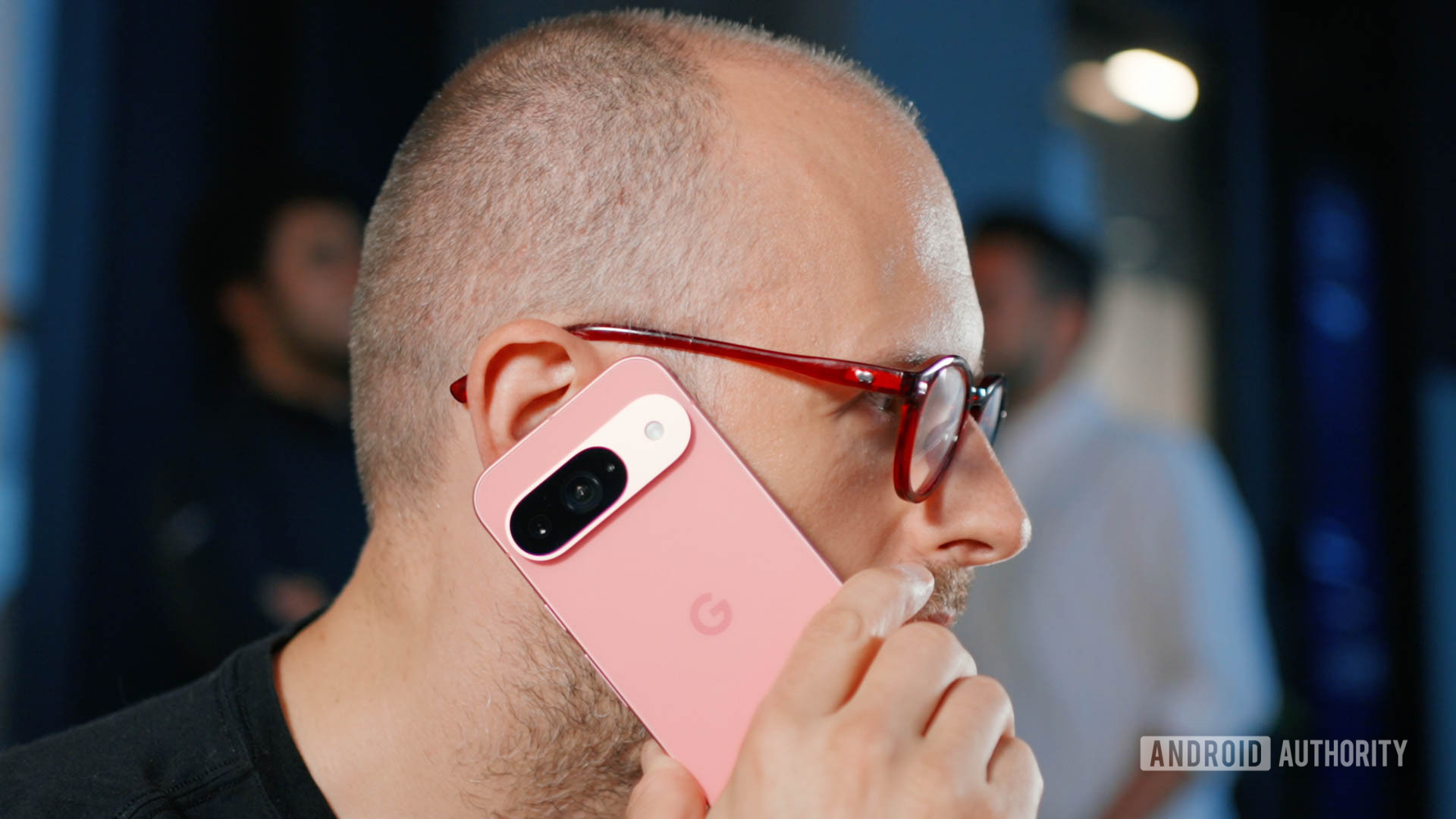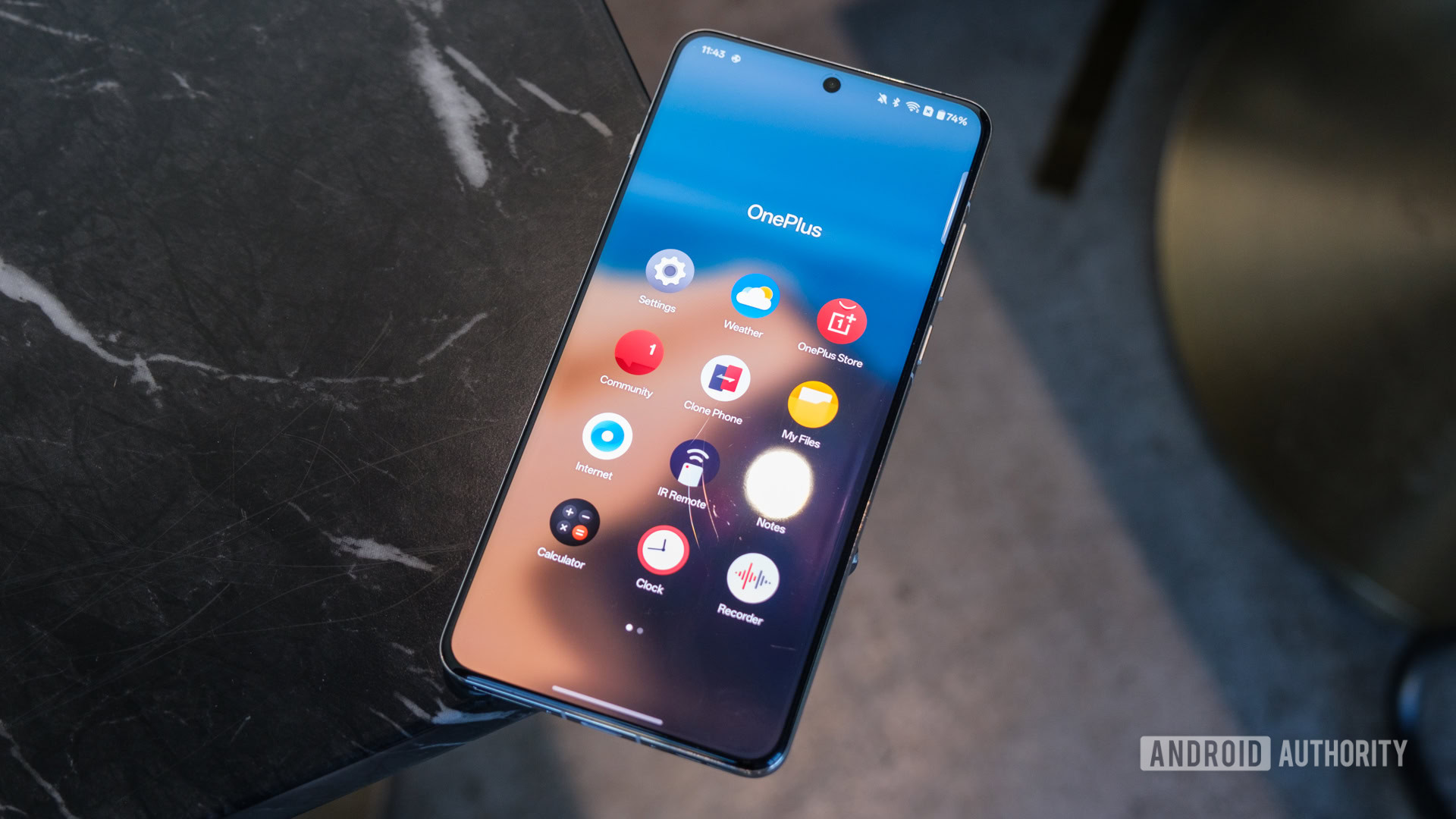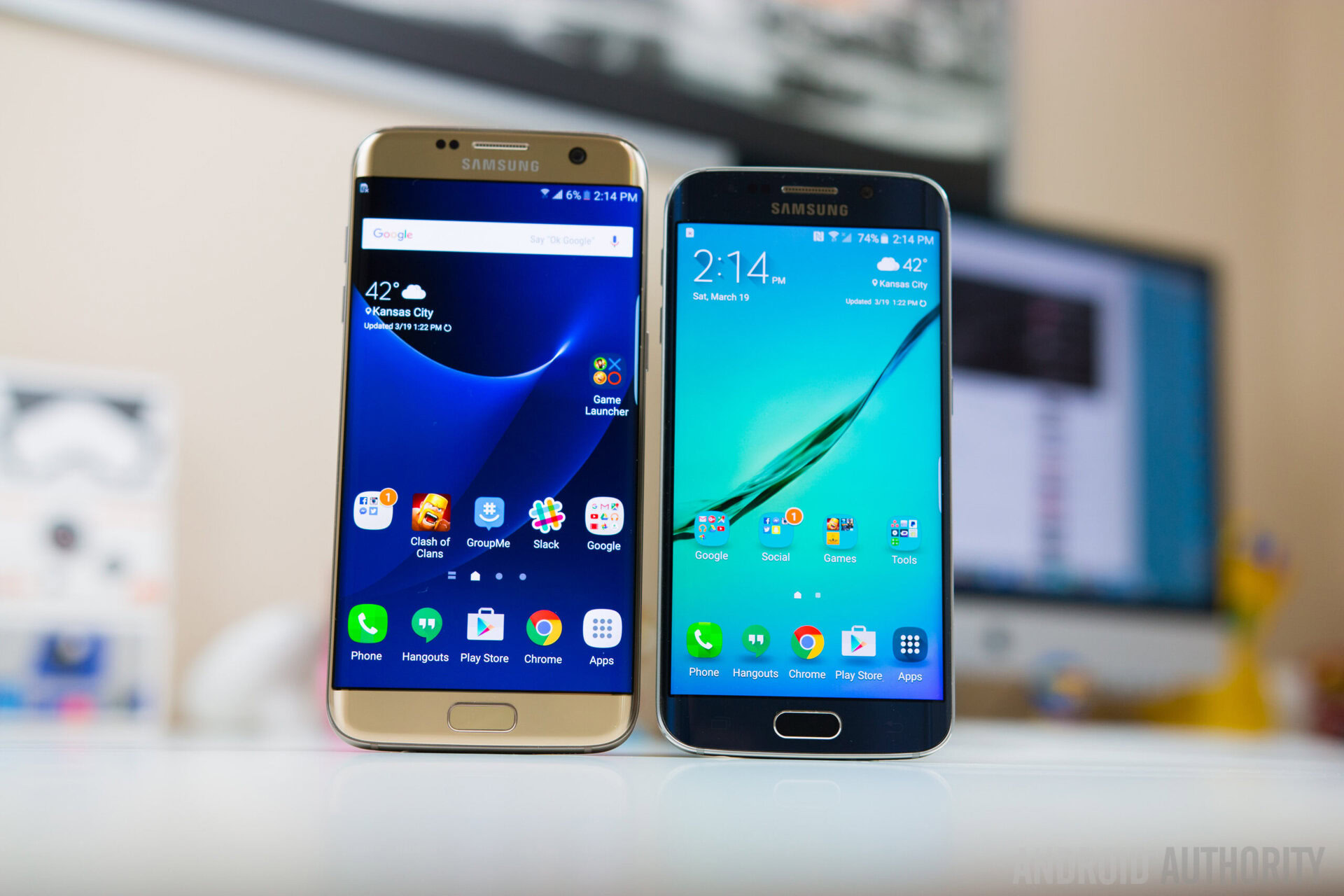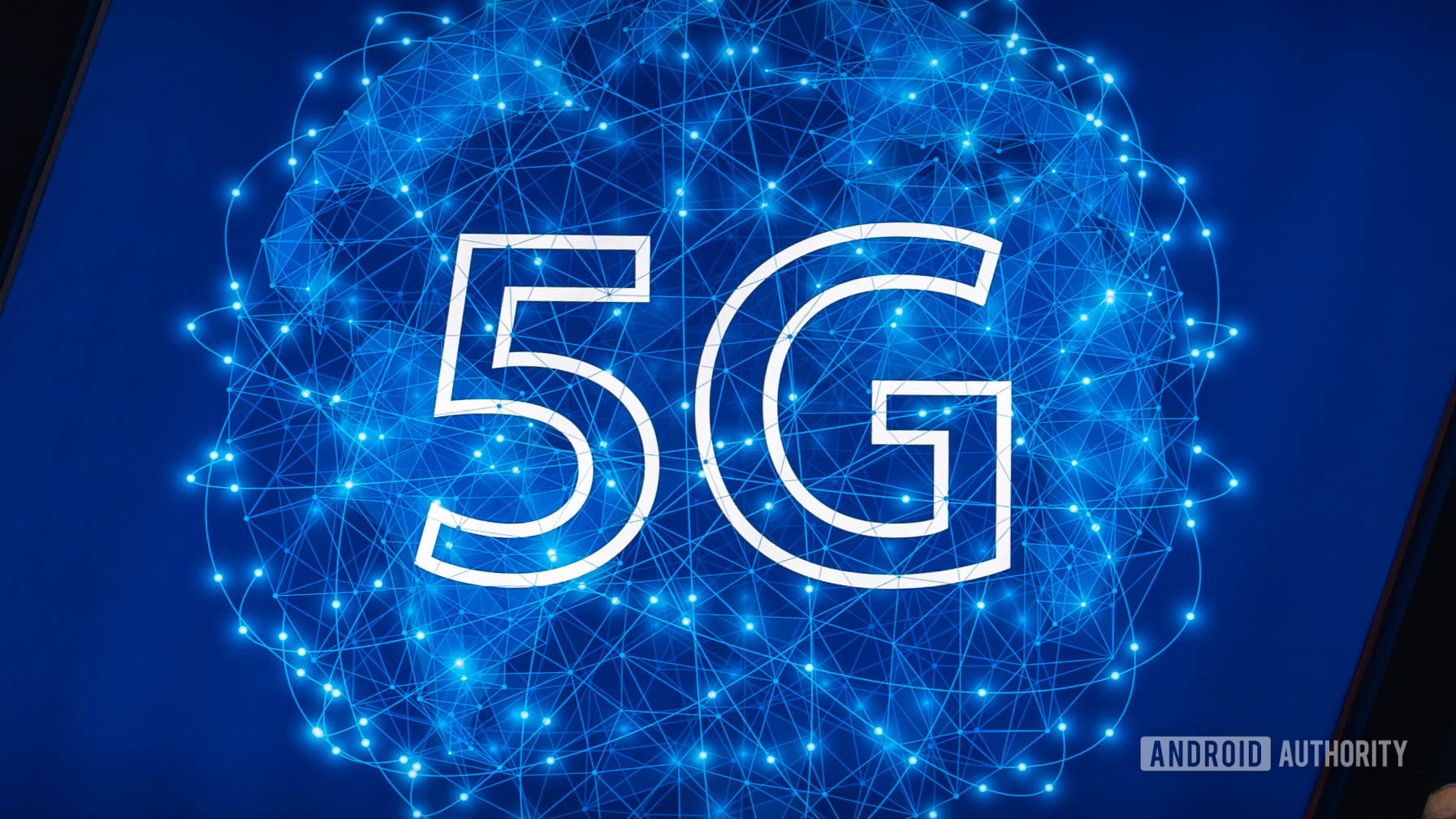Affiliate links on Android Authority may earn us a commission. Learn more.
Why is my phone's battery draining so fast?
Published onFebruary 11, 2025
Devices get more energy-efficient as batteries get larger, but battery life is still a concern for most users. Such is the nature of modern tech, but this doesn’t mean we should be plugging in multiple times a day. If you have issues with your phone’s battery draining faster than it should, identifying the culprits and finding solutions is worth the effort.
We are here to tell you the most common battery hogs in the smartphone world. Solutions for the most common issues are also included. Let’s get to it before that screen shuts off!
Reasons why your phone is draining so fast
Editor’s note: Some of the instructions in this article were put together using a Google Pixel 8a running Android 15 and an Apple iPhone 12 Mini running iOS 17.6.1. Remember that some of these steps might be different for you, depending on your hardware and software.
Keep the screen in check!
The screen has been the biggest power hog since modern smartphones came to be. Panels keep getting bigger, brighter, and more colorful, as well as sporting higher resolutions. We even have large foldable phones and dual-screen devices now. Though all these improvements add to the general experience, they also contribute to battery draining.
Let’s check how much battery your screen is using up. If the percentage is a bit high, you’ll know this is the culprit.
How to check battery usage on Android:
- Open the Settings app.
- Select Battery.
- Tap on Battery usage.
- Check if any apps are using too much energy. Then, tap on the View by apps drop-down menu and select View by systems. Here you can see how much battery the system components are using.
How to check battery usage on iPhone:
- Launch the Settings app.
- Go into the Battery section.
- Scroll down to the Battery Usage By App section.
- Here, you’ll see the apps using the most battery, as well as how much of it they use.
Check your battery usage, and you will find that the screen takes the top spot most of the time. Commonly used apps like YouTube, Facebook, or games may come close. Smartphone display technology is advancing much faster than battery tech, making battery life an even bigger issue to tackle in years to come. Until things get better, you will have to conserve energy.
Tips to lower screen battery drain
- Lower screen brightness: Dimming your screen brightness will help you save battery significantly. Go to Settings > Display > Brightness level, and adjust the brightness slider.
- Use adaptive brightness: This will ensure you get a bright screen when needed, but you also save battery when high brightness isn’t necessary. Here’s our guide to using adaptive brightness.
- Reduce screen refresh rates: Some devices sport screens with higher refresh rates, and often you can customize this in the settings.
- Reduce auto-lock times: Ensure your screen isn’t on just waiting to possibly be used by reducing auto-lock times. Go to Settings > Display > Screen timeout, and select the amount.
- Ditch live wallpapers: They may look nice, but your phone is essentially playing a video at all times, and that kills the battery.
- Use a black wallpaper: If you have an OLED or AMOLED display, using a black wallpaper is the most power-efficient because the display doesn’t have to activate those pixels. It’s argued the difference isn’t huge, but every bit of help is welcomed.
- Take advantage of the smaller screens: Some foldable phones, like the Samsung Galaxy Z Fold 6 and Motorola Razr Plus (2024), have smaller external displays. Try to use those more often than the larger display when there’s no need for an extended view.
Spotty service

Areas with lousy cellphone reception are silent battery killers, which is even more annoying than missing the latest cat videos. Your cellphone constantly communicates with nearby towers, trying to keep you connected every second of the day. When it’s struggling to keep a solid connection, it will work extra hard to reach the network and get you back on the grid.
If you live in a rural area, work in a massive building, or often find yourself in areas with spotty service, chances are your phone will have battery draining issues.
How to improve the signal to reduce battery drain
- Switch carriers: Carrier reliability varies by area, city, and neighborhood. Do some research, find out which carrier works best in your areas of interest, and look into switching.
- Use Airplane mode: The Airplane mode feature can force your antennas to take a break. Turn off all connectivity, and your phone won’t be working hard to stay connected. You can do this strategically when you are in places you know have lousy service. Just go to Settings > Network & internet > Airplane mode. Alternatively, you can use intelligent tools like IFTTT to automate Airplane mode by location.
- Network extenders: Carriers often offer network extenders that use the internet to give you a signal. Consider getting one if you know you are in a place with spotty service for long periods. You could have one at home or work to ensure the signal is strong where you spend most of your time.
- Signal boosters: Signal boosters can be expensive, but people swear by them. These products have an outer antenna that can pick up reception. The signal is then spread through the house with an internal antenna. A popular option is the weBoost Home Studio Omni ($349.99 at Amazon).
Apps and background services

Keep your apps in check if you’re having issues with battery draining. Certain apps drain the battery more than others. The obvious ones are YouTube, Netflix, and any streaming services. You might also want to avoid playing games to save energy, as those happen to be colossal battery hogs, especially if you are fond of titles with high-end graphics.
Plenty of apps cause battery draining without active usage. Applications like Facebook, Messenger, Instagram, and WhatsApp are common ones. Communication services like these try to keep you in touch and updated all the time. This means the apps constantly operate in the background, using data, pulling your location, sending notifications, and more. Not to mention that we tend to spend a lot of time using them, whether you are endlessly checking your feed or messaging friends and family.
How to fix it
- Keep app downloads minimal: I often realize I only use about 20% of the apps I have on my phone. Meanwhile, these applications are always working in the background and wasting battery. Why even have them? Go on a cleaning spree and delete apps you know you don’t need.
- Stop apps from working in the background: If you notice an app is taking too much of your precious juice, you can limit its background. Simply go to Settings > Apps > Select the app > App battery usage and toggle off Allow background usage. On iPhone, you can go to Settings, select the app, and toggle off Background App Refresh. Just realize you will lose some features and functionality, as the app will sleep when not in use.
- Close apps: While Android devices are made to multi-task, and closing apps can hurt more than it helps, there are times when closing apps is your best bet. Applications can go rogue, misbehave, or fail, in which case they often start draining your battery unnecessarily. It is good to close or kill the app to give it a fresh reset when this happens. Go to Settings > Apps > Select the app > Force stop > OK.
- Be mindful of your usage: Sometimes we say we want better battery life, but find ourselves playing games, watching movies, and spending hours on social networks. Then we wonder why the phone dies before you get home! Be mindful of the apps you use and how long you use them.
Do you have an old phone?

How old is your smartphone? More specifically, how old is the battery? Smartphone batteries start to lose performance with time (as well as constant heat). Age is the primary reason your battery life gets shorter. This means anyone rocking an older phone is likely reminiscing about the old times when the phone lasted much longer on a full charge.
You shave a second or two off of your phone’s maximum battery capacity every time you charge it. Batteries use chemical reactions to store and process energy; no chemical reaction is infinite. The method has been optimized like crazy, though, and that’s why batteries last as long as they do, to begin with. Additionally, batteries lose capacity even if you don’t use them.
How to fix it
- Buy a new phone: It may sound a bit depressing, but once a battery is too old to function efficiently enough, there is nothing sensible you can do about the issue. We have a list of the best phones around. If you’re on a tight budget, we also have a list of the best affordable smartphones.
- Change the battery: Phones with removable batteries are scarce now, but if you happen to be rocking one, you can buy a new battery and replace the worn-out one. If you have a phone with a non-removable battery (which is likely the case), you can open the phone up and change the battery, but this requires some technical know-how and involves some risk. You can also find a phone repair shop and have them take care of the job for you. Sending it to the manufacturer and having it replace the battery is another option. They’ll, of course, charge a fee if it’s not a warranty claim. Oh, and warranties, let’s talk about that!
- Does my phone warranty cover the battery?: Manufacturers didn’t commonly cover batteries in the past, when they were removable. This is because it wasn’t really part of the phone, but an accessory of sorts. Now that most phones have non-removable batteries, most manufacturers cover the battery if it goes bad within the warranty period (usually a year). Check your warranty details, but we know big players like Samsung, Google, and Apple will take care of you.
5G can eat up your battery!

5G phones are becoming much more common these days, making the newer network technology an essential factor to consider. Chances are that 5G connectivity is eating up your battery power faster than you would like. For starters, faster speeds will require more energy.
There’s also the spotty signal issue. As mentioned earlier in the article, phones will use plenty of resources to find a signal when unavailable. Because 5G is still not as proliferous, there is a higher chance you have bad 5G service in your area. Your phone will be working overtime to catch a 5G connection.
Furthermore, calls and SMS are still running through 3G or 4G networks. 5G only runs data. This means that even when connected to 5G, your phone is also using other networks to keep everything working.
Your best bet might be to turn off 5G if your battery is draining quickly. Even if you have an excellent 5G connection in your city, you might not even need the faster speeds. 4G LTE is plenty good for casual usage.
How to turn off 5G on Android:
- Open the Settings app.
- Go into Network & internet.
- Under SIMs, select your SIM.
- Tap on Preferred network type.
- Select LTE or whatever you prefer. Just avoid 5G.
How to turn off 5G on iPhone:
- Launch the Settings app.
- Go into Cellular.
- Under SIMs, select your main SIM.
- Tap on Voice & Data.
- Select LTE.
Other battery draining problems and tips
- GPS, Wi-Fi, and Bluetooth: How often do you use these antennas? I know I always leave them on, but I seldom put them to work. GPS, Wi-Fi, and Bluetooth are using the battery, even if a little. Turn them off when you don’t need them, and you will notice improvements in battery draining.
- Camera: Taking photos and videos requires ample amounts of energy. Avoid doing it so often, and your phone will live longer.
- Are you feeling cold?: Lower temperatures affect battery life significantly. Roger Gurney, owner of Arctic Tech Solutions, tells USA Today that lithium-ion batteries stop discharging electricity in the extreme cold. He mentions constant exposure to cold weather can permanently damage a battery. A good solution is to keep the phone close to you, so that body temperature keeps it toasty.
- Avoid the heat, too!: While the cold affects the immediate performance of the battery, the heat will affect your battery in the long run. A battery will start losing performance as it ages, and this process is sped up by heat. Try to keep the device from getting too hot, as much as possible.
- Stay up-to-date: Software updates often come with battery life improvements, so updating your phone to the latest software version is always good. On Android, go to Settings > System > Software updates > System update > Check for update. On iPhone, go to Settings > General > Software Update.
- Get a portable charger: A suitable battery pack will keep your phone alive longer without keeping you tethered to a wall. Get a good portable charger. We would recommend something like the CUKTECH 10 Power Bank or CUKTECH 20 Power Bank.
- Charge faster: Keeping your phone alive longer is great, but charging it as fast as possible is just as important. We have a list of the best wall chargers, if you need some help picking the right one.
If, after all these solutions, you still can’t get your device to last through a full day, maybe it’s time to upgrade to a new phone. You shouldn’t settle with any phone. There are devices with excellent battery life; you can check out our favorites.